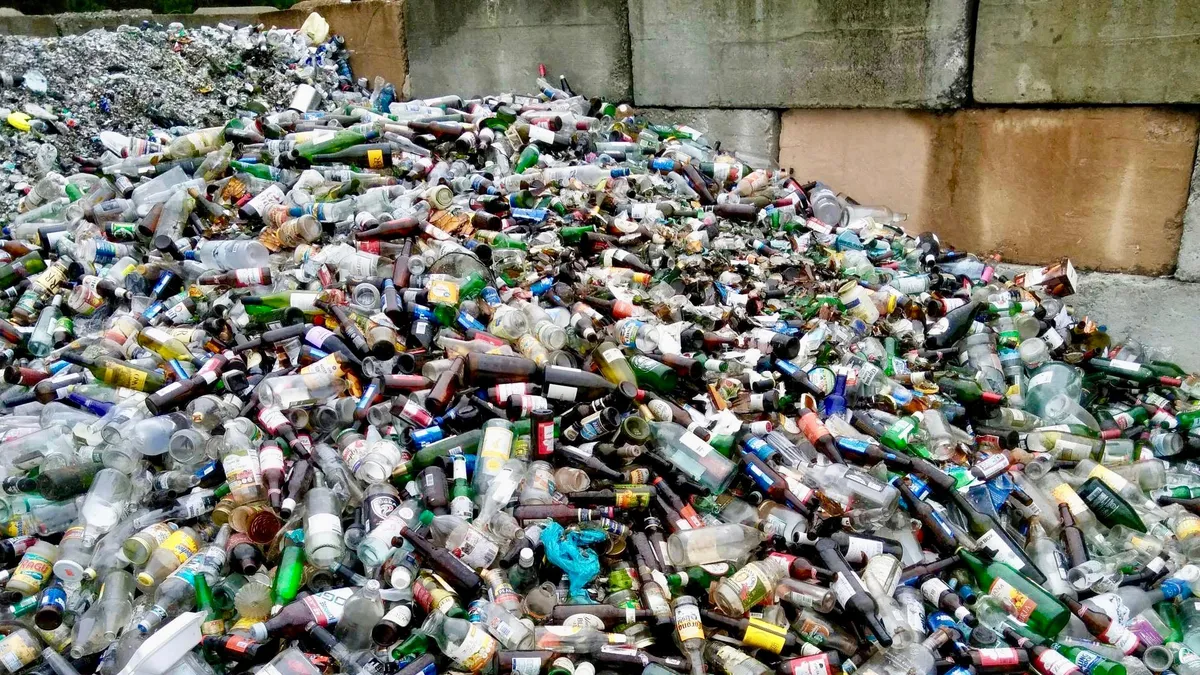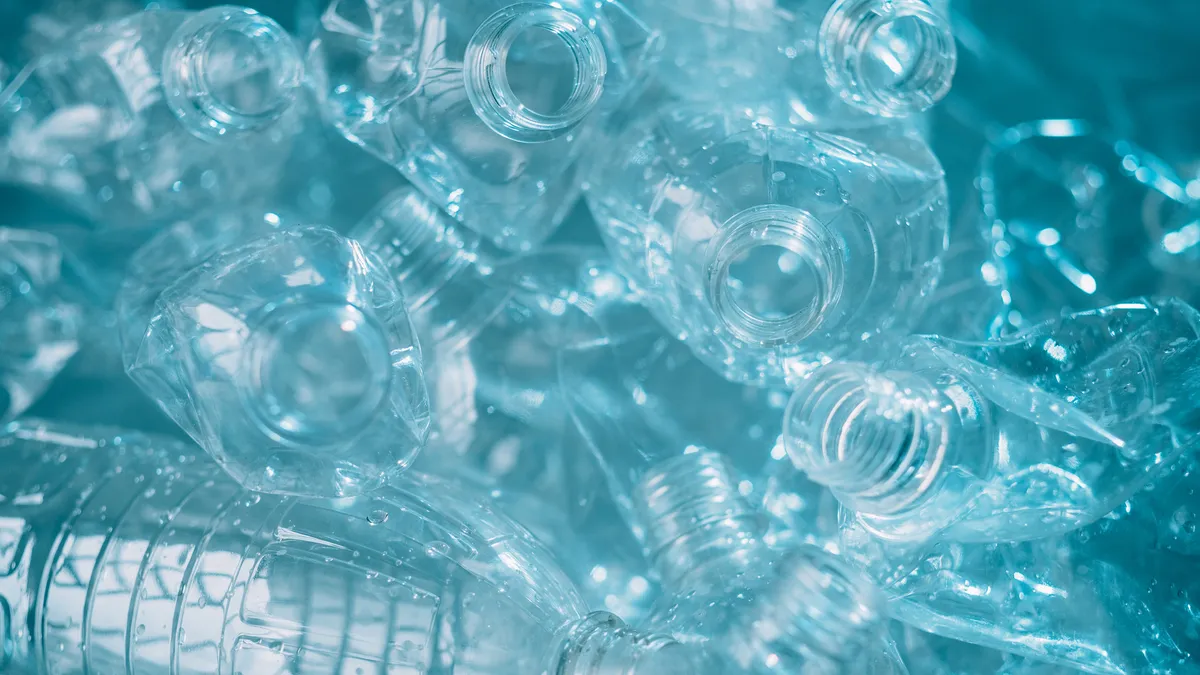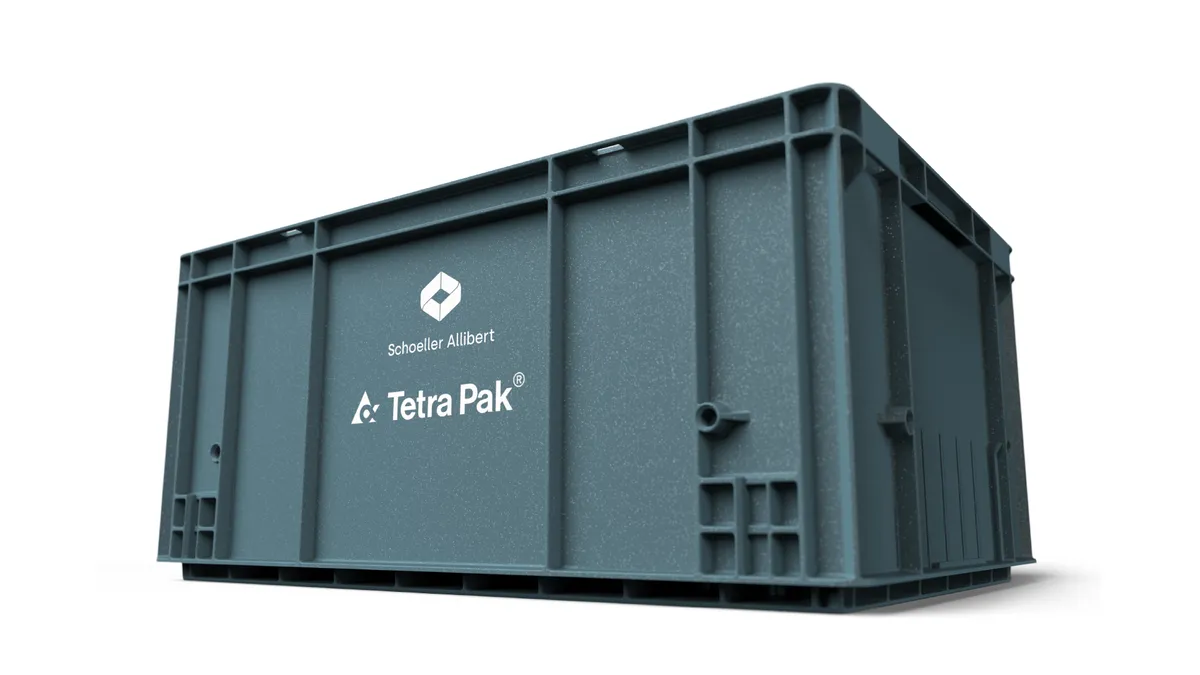Glass container recycling is a domestic affair, but the average consumer could easily think otherwise given the recent push to cut this material from dozens of curbside programs around the U.S. post-National Sword.
Some of the waste and recycling industry's largest service providers have been looking for ways to drop glass for years.
While it's one of the most recyclable commodities in the average curbside bin, glass is constrained by the economic realities of needing more local end markets due to transport logistics and margins for MRF operators are often thinner. As prices rise for recycling service in many parts of the country, due to the recent international commodity shake-up, the narrative from some of the industry's largest players is that glass may not be worth the trouble.
Now, with the recent announcement of a new president, the Glass Packaging Institute (GPI) hopes to change that. Scott DeFife's previous experience at the Plastics Industry Association (PLASTICS) and National Restaurant Association, as well on Capitol Hill, is seen as the right fit for a material looking to reframe the conversation. Waste Dive spoke with DeFife in September to learn more about his plans for the new job.
The following conversation has been edited for brevity and annotated for context.
WASTE DIVE: What's your view of the state of glass recycling in the U.S.? Is it as troubled as some say, or is there reason for optimism?
SCOTT DEFIFE: I believe there's reason for optimism.
People want to continue to recycle glass. It's still the quality material and the quality packaging product that people strive for. We may have geographical challenges that we need to address, but everybody's focused on it. I think with a little bit of time and ingenuity, maybe some new models and some innovation, we can get through this ... When the other materials are challenged in the way that they are, people will realize that glass is a sustainable alternative that needs to have some support.
Are there any lessons from your time in plastics that you want to bring to glass?
DEFIFE: I certainly think that there are some areas where the issues are kind of similar, at least in their origin.
DeFife goes on to mention how both plastics and glass are currently facing a wave of media stories about market challenges, but that he often hears from people who believe glass recycling can still work.
We've got some significant structural flaws in the system that are exacerbated by international market issues and the cascade of the economics back through the system ... Now that there's pressure on the overall system, the weak points are getting exposed.
There's a core group of people that are focused on [interventions at the local level] and it's going to be one of my missions here at GPI to get that going in the right direction ... It may require some out-of-the-box thinking, and some steps that previously haven't necessarily been seen, which was the case at PLASTICS.
Inside the plastics industry, it's very simple to see and hear people in the waste management industry talk about, "I can make money off ones and twos, but threes through sevens – can't do anything with them, don't want them in the bin, it's going to start costing you money, we need to go the other direction." That was an overly simplistic explanation of what was going on. Because within that threes through sevens were some quality products that if you figured out a way to isolate them in the system, or apply some new techniques to the sortation, you could get a product that had a market.
Glass is a product that has a market. The issue that is similar between plastics and glass, as far as the recycling struggles right now, is quality. It's a quality issue across the board. The same thing is going to happen in the paper arena as well. It's a quality issue.
DeFife elaborates on how working to modernize equipment, and develop economies of scale for collection and processing, will be priorities for GPI.
Those are fixable issues. It could be that we need to disrupt the system a bit, but they're fixable issues.
Does GPI have a policy about whether glass should still end up in single-stream curbside bins, or is there growing interest in separate collection or a drop-off solution?
DEFIFE: We want it to stay in curbside bins. We can support, and have in California, supported model legislation that allows for communities to go back and try [dual-stream] if they want to. We understand the challenges. You're not going to wave a magic wand and create a dual-stream system or a multi-stream system overnight. But if somebody wants to try it, we're going to be there to support it. And if we have a state that doesn't have a redemption or a bottle bill, then we need to talk about that. It could be that we need some new hybrid.
But we want it in the bin whenever we can have it in the bin ... It's really about the community and the infrastructure near the community. What works in that location?
Even when end markets are geographically accessible, it sounds like quality is still an issue. Are you seeing enough investments at the MRF level in front-end quality control?
DEFIFE: We're seeing some. For every time I see a story where some community is considering taking glass out, we're seeing another story about somebody who's ready to put investment in. So I think we're beginning to see the rebound and positive movement in that arena.
As more states push for waste reduction or circular economy policies, DeFife sees glass as an important part of those efforts. Growing consumer interest in returnable and refillable concepts is also seen as a boon for glass. Yet the right infrastructure needs to be in place to capture enough quality material for recycled cullet to support those efforts.
This is consistent from where I was at PLASTICS, where we created this idea for federal investment (The RECOVER Act) that glass then supported. Also, we're seeing [interest] in states and localities ... The next natural step is putting some investment into infrastructure and equipment, and figuring out how to incentivize them.
Asked whether he believes members or other players in the glass industry are willing to invest in more new infrastructure, DeFife said his early sense is they are. After coming out of a "tough couple of years," with the dust from National Sword starting to settle, he said the glass sector is ready to "start rebuilding a new model."
Cost pressures driven in part by National Sword have given waste and recycling companies an excuse to cut glass from programs, and they've been pretty successful in a lot of cities and towns. Beyond the logistical factors, another argument has been that glass recycling isn't worthwhile according to lifecycle analysis calculations. Is it a planned focus of yours to push back on that narrative?
DEFIFE: That is definitely a planned focus for us to push back on that narrative. We think that the calculations are missing some valuable points along the lifecycle analysis. They're missing some critical factors related to domestic supply and the circular nature of the manufacturing side and the environmental factors.
Accounting for reusable or refillable glass containers is seen as one priority in these discussions, according to DeFife.
Quite honestly, I just think it's a short-term opportunistic response. The policymakers would prefer not to go down that path. People want to recycle the material that they're using and they want to recycle glass.
When a decision is made like this it is usually due to a short-term, financial pressure, not an actual policy desire to stop recycling glass. The economic models and the financing models for the waste management system also need to change. Policymakers should be looking at long-term gain, and ensure that their contracts are requiring the companies that are participating to modernize and keep up with packaging trends and the material that's coming through the system.
It's part of our job to equip consumers to figure out how to talk to their policymakers to make different decisions. That's what we're going to be working on. Glass should not be in landfills.
To clarify, ideally that would also include not using it as alternative daily cover at landfills, right? The goal of your members would be to get it back into cullet?
DEFIFE: Yeah, we want it back in cullet ... It's helpful in the cullet for the production of new bottles. It lowers greenhouse gas emissions, it lowers the temperature for which the furnaces need to operate.
Moreover, if you're not using it in the packaging it has other lives and other uses that are beneficial. And people know that. Just abandoning that is wrongheaded, and ultimately will be shown to not be the direction that people want to go.
What are GPI's near-term priorities in terms of legislation or other projects?
DEFIFE: We're looking at the legislative landscape for the changing nature of packaging recovery regulation.
DeFife cites the recently stalled packaging bill in California (which GPI opposed following late amendments) as a sign of where he sees policy discussions heading next.
2020 is going to be about many of the other states that had started to dip their toe in this arena, or that will start to do it in 2020. So that's definitely one of the priorities. Model programs for the collection, recovery and recycling of the glass is another one of those priorities.
Then from a pure trade association standpoint, we're going to grow the membership. We want all parts of the value chain in this organization ... If you're in the business, or attached to or tangential to the business of glass packaging, we want you engaged in GPI.























